Handplane Fundamentals: Sharpening
You'll never get a handplane to perform the way you want it to until you get the blade truly sharp.
Start your 14-day FREE trial to watch this video
Plus, access more than 500 video workshop episodes when you become a member
In this video workshop series the fundamentals of Handplanes with Mike Pekovich episode three he teaches you, you’ll never get a handplane to perform the way you want it to until you get the blade truly sharp.
Videos in the Series
-
Handplane Fundamentals: Why You Need HandplanesOctober 4, 2016
-
Handplane Fundamentals: Grain, Tearout, and Blade AngleOctober 4, 2016
-
Handplane Fundamentals: SharpeningOctober 11, 2016
-
Handplane Fundamentals: The Block PlaneOctober 18, 2016
-
Handplane Fundamentals: Shoulder and Smoothing PlanesOctober 25, 2016
-
Handplane Fundamentals: The Jack PlaneNovember 1, 2016
-
Handplane Fundamentals: Special-Purpose PlanesNovember 8, 2016
-
Handplane Fundamentals: The Card ScraperNovember 15, 2016
-
Securing Work on the BenchNovember 29, 2016
-
Handplane Fundamentals: Prepping Furniture PartsDecember 6, 2016
-
Handplane Fundamentals: Flat and SmoothDecember 13, 2016
-
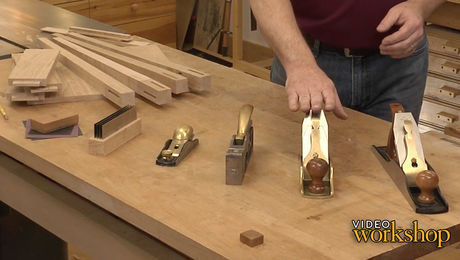 Recommended resources: Fundamentals of HandplanesJune 18, 2020
Recommended resources: Fundamentals of HandplanesJune 18, 2020


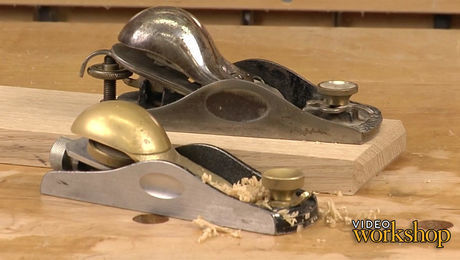
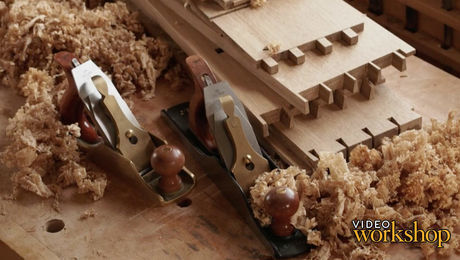
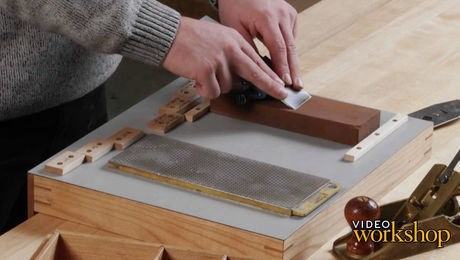
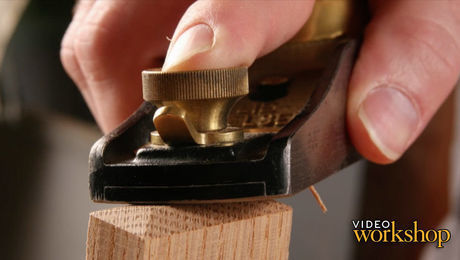
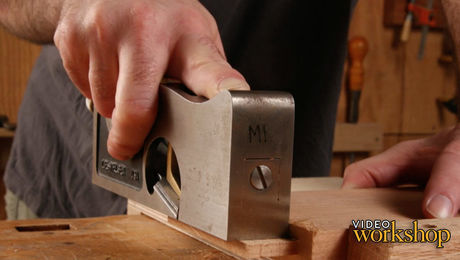
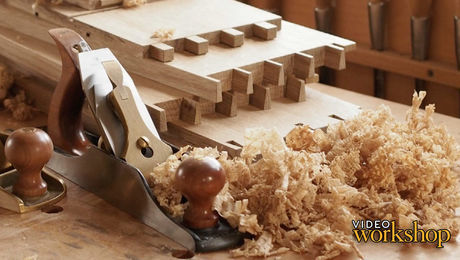
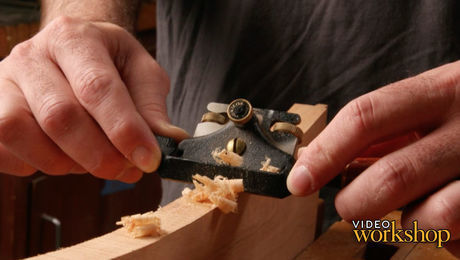
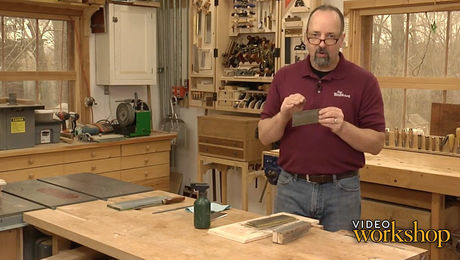
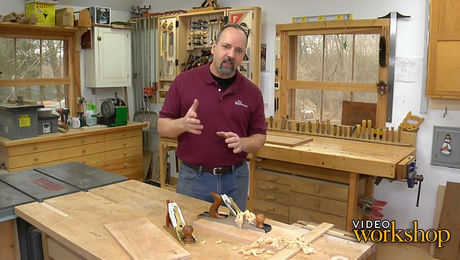

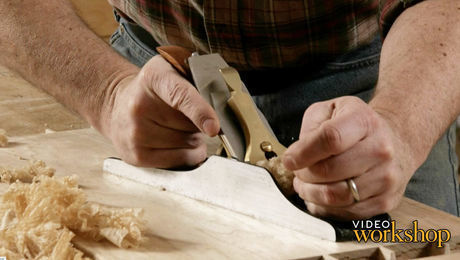






Comments
Nice job, Mike. If a picture is worth a thousand words, then a video is almost like being there. love the whole series on planes.
Jay
Nice. For far too long I've tried to polish way too much of the blade instead of the leading edge wasting much too much time.
Mike,
Well done, as usual.
Note that Charlesworth originally described the "ruler trick" with a grinding motion that passed off and back on the edge of the stone. I suspect the reason for that was the curved bevel. If you imagine the curved bevel sitting on flat stone angled up by the ruler then only the center of the curve is being sharpened. However in moving off and on the stone then the edges make contact and are sharpened as well. So, a few more angels to fit on this pin. ;-)
I recently took a class with Mike at the Connecticut Valley School of Woodworking, both Mike and the school were worth every penny! Mike is a top-notch instructor and the CVSW is an outstanding establishment that executes it's instruction with a top level of quality equipment and a learning style for woodworkers at every level. Mike really brings your quality of work to a whole new understanding. I will return! I am a better woodworking after just one class thanks to Mike and the CVSW.
Thanks Mike. I forget the little things sometimes, your videos always bring them back.
Great video Mike but I have a question. All my planes are bevel up. When you spoke about "flattening" the back of smooth planes with the ruler trick you indicated it would not work for chisels because they are used bevel up and the back needs to be dead level as it is a reference surface where that's not the case with bevel down planes. Would you use the ruler trick for bevel up planes?
Thanks for another great video.
This Neanderthal woodworker would appreciate your guesstimate at how much pressure your using. Hard to tell if your knuckles are changing color.
Best video I've seen on sharpening. Thanks!
Mike, just curious why you don't use diamond plate stones? Wouldn’t that pretty much mitigate the deformation of the stones surface keeping it flat?
Hi, I'm new to this stuff and the stones will be a major investment for me. I'm torn between the nortons described here and the Shaptons recommended by Bob Van Dyke in the June 2016 issue. I don't have an issue with the Norton sharpening stones as much as I do with the Norton flattening stone you're using here, in comparison to the DMT lapping plate Van Dyke uses. The Norton flattening stone will itself eventually require flattening by something like the DMT, which leads me to believe maybe using the Norton sharpening stones, along with a DMT lapping plate might be the way to go. Perhaps one day, when the Nortons wear out, I might upgrade to the shaptons. Any thoughts?
Never Mind... I watched this a few days ago and have been around the world and back regarding sharpening research. I rewatched just now and see he's using a diamond plate, rather than the norton flattening stone, so I guess that confirms my thought to go with norton stones and a diamond plate. sorry for the confusion. Great video series, by the way!
Wow, just found this series - very good explanations. The one on grain was terrific. Seeing the examples of grain direction made much more sense than the stuff I have read.
have tried a few of this series - None of the videos work - I know my software and systems are up to date and have good internet speed so what gives? Russians got your number?
Send me an email with specifics about your system ([email protected]). I'll open a ticket. Is it just this series?
Hey Mike,
had a question about the diamond lapping plate. I noticed it is leaving scratch marks on my water stones, and the manufacturer says to use less pressure to leave a smoother finish. I've been trying that and have had a little bit of luck but am finding it difficult to leave a smooth surface on my waterstones after flattening. Any advice? I may not be being patient enough hah Thanks FWW
Charles,
You don't need to worry about a polished surface on your stone. Overall flatness is what you're going after here.
Thanks Ben! Appreciate you and all of FWW. Really helpful with school.
Best
That honing guide you use has an inner channel for chisels that would also be suitable for your narrow plane iron. It also has reference blade-protrusion distances on it for setting the coarse angles. Thanks for a very informative series.
Great video series as usual with some great advice.I have always been lead to believe water will rust diamond stones which is exactly what has happened to mine so is Mike really putting his diamond stone in a water bath when he re flattens his water stones? Thanks
Log in or become a member to post a comment.
Sign up Log in